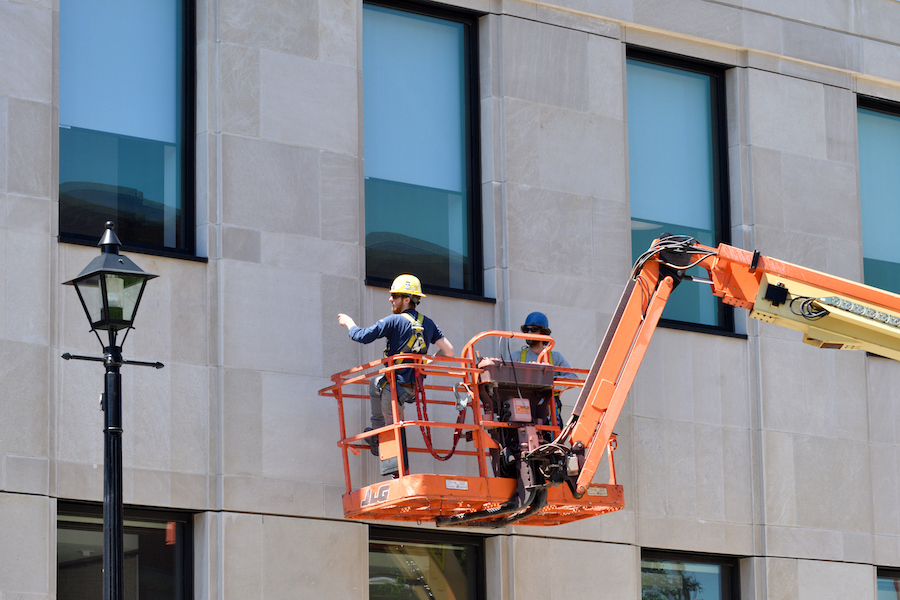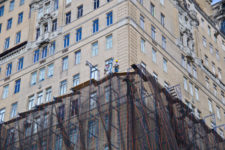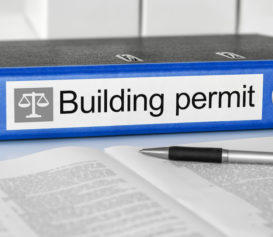It’s more critical now than ever to understand common facade mistakes in NYC with enforcement on the rise. Please welcome guest blogger Stefan Gjoni, façade expert and Partner at ACE Project Management! He’s here to share what you need to know to prevent issues in your façade compliance plans:
Ensuring the safety and visual appeal of high-rise buildings is crucial for the well-being of occupants and pedestrians.
The Façade Inspection Safety Program (FISP) filing, formerly known as Local Law 11/98, mandates regular inspections and repairs of building facades to maintain their structural integrity. However, many owners make significant mistakes when handling facade repair projects, jeopardizing the efficiency, quality, and compliance of the work. Below, we will explore the importance of FISP compliance, summarize common mistakes owners make, and emphasize the need for proper planning.
Understanding FISP
Under the Facade Inspection Safety Program (FISP), building owners are legally obligated to hire qualified professionals to assess the condition of their facades every five years.
These inspections play a critical role in identifying and addressing potential issues such as cracks, deteriorations, or loose elements. Failure to prioritize or delay these inspections poses significant risks, including overlooking safety hazards and necessary repairs.
Building owners must recognize the potential long-term consequences of such negligence, as even a minor defect allowing water infiltration can rapidly accelerate the deterioration of other areas. Taking swift action to address identified issues and ensuring compliance is crucial for the safety of occupants and pedestrians, while also avoiding heavy financial penalties and non-compliance violations.
To mitigate these risks, building owners have several proactive steps they can take:
- Don’t underestimate – allow for ample time for inspections, repairs, and filings. Depending on the outcome of the previous cycle, different lead times are recommended. For buildings that were previously filed as safe, owners should initiate the inspection and planning process 8-12 months in advance. In the case of buildings filed as SWARMP (Safe with a Repair and Maintenance Program), a longer timeframe of 12-16 months before the due date is recommended.
- Take advantage of experts and tools. Whether it’s tracking facades using SiteCompli’s Compliance Manager and calendar integration, or ensuring you have ongoing communication with your façade expert, make sure you’re aware of when things are due, and what’s happening to move the project along
FISP Classifications
Under FISP, building facades are classified into three categories: Safe, Unsafe and SWARMP. Each category entails specific requirements to ensure the safety and maintenance of building exteriors.
The Safe category is assigned to facades that are in good condition or have recently undergone repairs. Buildings falling under this category do not require additional work between inspection cycles, apart from routine visual inspections performed by building staff. This designation provides reassurance that the facade meets safety standards and is properly maintained.
The Unsafe category signifies a facade in need of immediate attention. In such cases, building owners must promptly install sidewalk protection measures to ensure public safety and commence planning for necessary repairs. Swift action is crucial to address any structural issues and mitigate potential risks associated with an unsafe facade.
Many owners fail to understand that the SWARMP category identifies facades that necessitate ongoing maintenance and preservation efforts. Owners of buildings in the SWARMP category must take regular measures to address visible signs of deterioration, conduct cleaning activities, and ensure the integrity of caulking and sealants. By adhering to these maintenance practices, owners can prevent potential hazards, extend the lifespan of their facades, and minimize the extent of the repairs before the FISP filing for each subsequent cycle.
Planning Is Everything When It Comes To Facades
In the realm of building maintenance and renovation, owners often underestimate the importance of comprehensive planning when embarking on facade repair projects.
Failing to develop a detailed plan can result in inefficiencies, ineffective repairs, and unsatisfactory outcomes. Owners may find themselves grappling with a range of issues, including project delays, budget overruns, and ultimately, disappointing results.
To begin with, owners should seek the expertise of a reputable project management firm capable of conducting a comprehensive evaluation. By partnering with experienced professionals, owners can leverage their knowledge and insights to ensure that the repair process addresses the most critical issues first. Engaging professionals with a documented history of delivering quality work and adhering to safety standards ensures a satisfactory outcome for the project. By avoiding the temptation of cutting corners and investing in qualified contractors, building owners can mitigate risks, promote project efficiency, and safeguard the structural integrity of their facades.
Following the assessment, a detailed repair plan must be meticulously developed. This plan should outline the scope of work, including specific repairs to be undertaken, timelines for each phase of the project, necessary permits to be obtained, and realistic budgets. One of the key advantages of collaborating with professionals from the outset is the ability to avoid costly surprises that may arise during the execution of the project. Experienced project managers possess a deep understanding of potential challenges and can anticipate them in advance. By leveraging their expertise, owners can navigate unforeseen hurdles with greater ease and minimize costly setbacks. Moreover, involving professionals in the planning stage allows for a more efficient and streamlined execution of the project.
With a detailed plan in place, project managers can allocate resources effectively, coordinate various stakeholders, and ensure that the repairs progress according to schedule. This proactive approach enhances the overall efficiency of the project and reduces the likelihood of unnecessary delays or disruptions.
Key Takeaways
It is essential and mandatory for High-Rise Buildings to comply with FISP filing requirements, alongside maintaining façade safety and visual appeal. By avoiding common mistakes such as neglecting timely inspections, lack of detailed planning, or not implementing an ongoing repair program, owners can ensure successful facade repair projects.
Owners should recognize the importance of FISP compliance, educate themselves on the inspection and repair process, and seek professional guidance. By taking a proactive approach to the facade maintenance and repairs, owners can prioritize safety, enhance property values, and contribute to the overall beauty and sustainability of their buildings.
Questions about Facade compliance and best practices? Reach out to Stefan at stefan@acepmnyc.com! Don’t forget to check out our latest post on the sidewalk shed overhaul, which touches on possible future changes to FISP.





